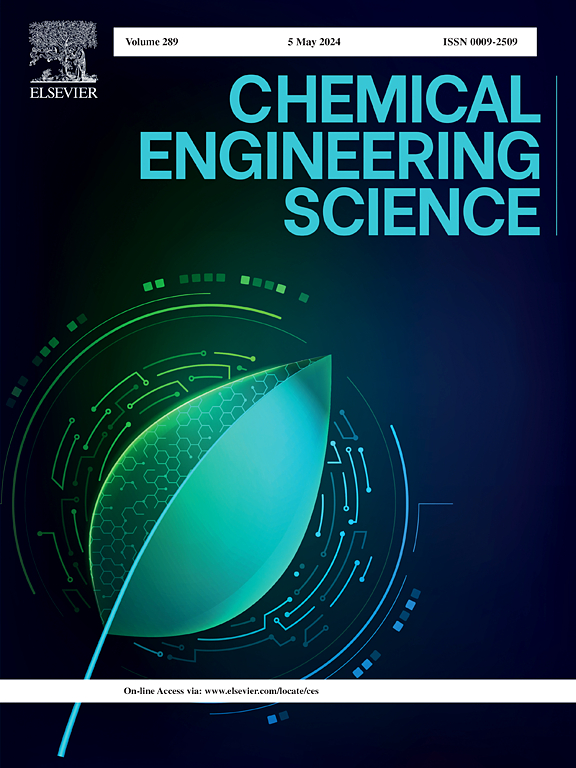探索短链醇和NaCl浓度对水/SDBS表面活性剂/正辛烷体系界面性质的影响:利用MD模拟对乳化体系制备的分子洞察
IF 4.1
2区 工程技术
Q2 ENGINEERING, CHEMICAL
引用次数: 0
摘要
通过MD模拟研究了短链醇和NaCl浓度对水/SDBS表面活性剂/正辛烷体系界面性能的影响。在分子水平上评价了乳化体系的最佳配方条件。模拟结果表明,用SDBS/正丙醇和SDBS/正丁醇单层制备的体系的IFT降低。这些结果表明这些物种之间在界面处具有很强的协同作用。结果表明,在低NaCl浓度下,醇分子向残留在混合单层中的正辛烷相迁移较少,从而稳定了乳化体系。在较高的NaCl浓度下,醇类向正辛烷相的迁移是相当可观的,导致位于界面处的混合单层破裂。能量分析表明,与SDBS表面活性剂和短链醇分子相互作用有关的适当的亲脂-亲水平衡是混合单层在界面处稳定的基础。本文章由计算机程序翻译,如有差异,请以英文原文为准。


Exploring the impact of short-chain alcohols and NaCl concentration on the interfacial properties of the water/SDBS surfactant/n-octane system: A molecular insight into the preparation of emulsified systems using MD simulations
MD simulations were carried out to explore the effect of short-chain alcohols and NaCl concentration on the interfacial properties of the water/SDBS surfactant/n-octane system. The optimal formulation conditions for emulsified systems were evaluated at molecular level. The simulations revealed a reduction in the IFT of the systems prepared with the SDBS/n-propanol and SDBS/n-butanol monolayers. These results indicate a strong synergism between these species at the interface. At low NaCl concentrations, the results suggest that the alcohol molecules have a low migration to the n-octane phase remaining in the mixed monolayers stabilizing the emulsified system. At higher NaCl concentrations, the migration of alcohols to the n-octane phase is considerable, producing a rupture of mixed monolayers located at the interface. Energetic analyses suggest that an appropriate lipophilic-hydrophilic balance associated with the molecular interaction between SDBS surfactant and short-chain alcohol is fundamental for the stability of the mixed monolayers at the interface.
求助全文
通过发布文献求助,成功后即可免费获取论文全文。
去求助
来源期刊

Chemical Engineering Science
工程技术-工程:化工
CiteScore
7.50
自引率
8.50%
发文量
1025
审稿时长
50 days
期刊介绍:
Chemical engineering enables the transformation of natural resources and energy into useful products for society. It draws on and applies natural sciences, mathematics and economics, and has developed fundamental engineering science that underpins the discipline.
Chemical Engineering Science (CES) has been publishing papers on the fundamentals of chemical engineering since 1951. CES is the platform where the most significant advances in the discipline have ever since been published. Chemical Engineering Science has accompanied and sustained chemical engineering through its development into the vibrant and broad scientific discipline it is today.
 求助内容:
求助内容: 应助结果提醒方式:
应助结果提醒方式:


